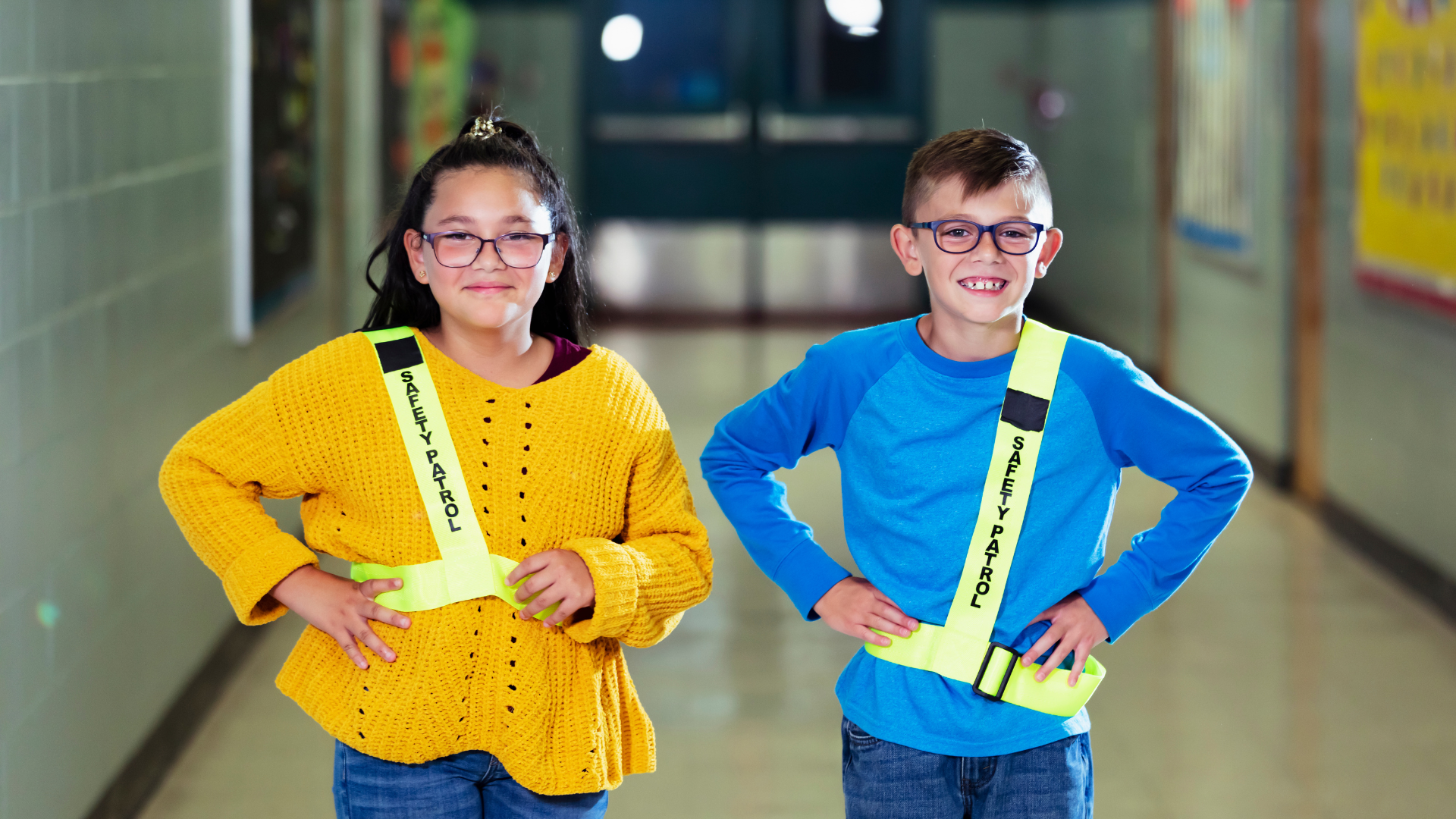Securing Student Safety: A Blueprint for Comprehensive School Safety Planning
In today’s complex world, ensuring student safety is more crucial than ever. This blog outlines a comprehensive blueprint for school safety, detailing essential strategies for creating secure environments where students can thrive. From analyzing potential risks and vulnerabilities to codifying effective safety protocols, we will explore the foundational elements that contribute to a robust safety plan.
You’ll learn how to assess campus environments, evaluate staff preparedness, and leverage technology to enhance communication and response capabilities. We’ll also cover the importance of institutional training, real-time communication, and the integration of data to continuously improve safety measures.
By implementing these best practices, schools can not only protect their students but also foster a culture of trust and transparency within the community. Join us as we delve into the critical components of school safety and take actionable steps toward creating a nurturing, secure environment for every student.
Analyzing Risks and Vulnerabilities
A robust student safety strategy begins with a thorough analysis of potential risks and vulnerabilities on campus. This foundational step is crucial for creating a secure environment where students can thrive.
Environment
Conduct a detailed assessment of classroom buildings, outdoor spaces, and hallways. Identify areas that may be prone to intrusions, ensuring that every vulnerable spot is fortified against potential threats.
Routines
Review daily schedules, events, and extracurricular activities to pinpoint how location and timing might expose students to risk. By understanding these dynamics, schools can enhance monitoring and implement targeted safety measures.
Personnel
Evaluate the preparedness of staff in emergency response training. Assess leadership decision-making structures and identify any gaps in skills or availability that could jeopardize student safety during critical situations.
Technology
Examine the reliability of notification systems and backup power sources. Identify any limitations that could impede rapid, coordinated responses in emergencies, ensuring that all safety infrastructure functions seamlessly.
This comprehensive analysis serves as a roadmap for effectively allocating resources toward policies, equipment, and training. By prioritizing student safety through proactive measures, schools can significantly reduce risks and improve response effectiveness when challenges arise.
Codifying Safety Protocols
Every school community must establish clear, effective safety protocols for student safety. These protocols should be well understood by all stakeholders.
Contingencies
- Outline step-by-step lockdown procedures, securing exits and identifying shelter locations for each room.
- Designate primary and secondary evacuation assembly points, ensuring reliable headcount processes for student safety.
- Establish a hierarchy for internal and external communications, connecting leadership, families, and media outlets effectively.
- Develop temporary relocation protocols for situations when campus facilities become unsafe, ensuring student safety at all times.
- Provide post-event trauma counseling resources for students and staff affected by safety incidents.
Additionally, create controlled yet accessible daily campus entry procedures for visitors. This balances security checkpoints while allowing administrators to safely welcome guests.
Defining Emergency Response Duties
Effective student safety relies on clearly defined emergency response duties for all personnel involved.
Roles Outline
- Senior leadership must guide the response and communicate updates to external community stakeholders.
- Campus nurses, EMTs, and trained staff provide urgent medical assistance during emergencies, ensuring student safety.
- The communications team rapidly informs faculty, students, families, and media outlets about safety situations.
- Campus zone sweepers systematically assess areas, reporting all-clear signals after checking for potential threats.
- Designated evacuation wardens guide orderly exits through predetermined routes, ensuring a smooth evacuation process.
- Assembly point securers confirm registrations to account for students once they relocate to safety.
- Backup staff serve as redundancies, ensuring disaster team members maintain coordination during emergencies.
Formalize these roles in the school safety protocol documentation. This clarity ensures that leadership hierarchy and critical safety processes are always understood.
Institutionalizing Readiness through Training
Robust student safety policies require rigorous readiness from both students and staff, supported by consistent safety education.
Drill Schedule
Schedule recurring drills to practice vital safety scenarios, including:
- Swift identification of lockdown locations and methods for silently securing room exits.
- Orderly evacuation protocols from various campus areas to designated meeting sites.
- Contingency plans for temporarily holding classes remotely if buildings become compromised.
- Medic administration simulations for common health emergencies like allergies or asthma attacks.
- Emergency simulations for situations ranging from earthquakes to violence threats, improving response skills.
Conducting monthly drills reinforces muscle memory for safety processes, allowing teachers and students to react instinctively. These test runs also create opportunities for constructive feedback, continuously optimizing school emergency plans.
Strengthening Connections through Real-Time Communication
Real-time check-ins and direct messaging are crucial components of effective school communication, especially during emergencies. These features not only secure connections but also keep families informed about their loved ones’ status, fostering a sense of reassurance.
Ongoing Engagement and Trust
Building community trust in school leadership is essential, particularly during crises. Ongoing engagement and transparent communication create a foundation of trust. When families feel informed and connected, their confidence in the school’s ability to manage situations increases.
Before Emergencies
Maintaining open communication before crises helps establish familiarity with safety protocols:
- Regular Distribution of Safety Protocols: Sharing safety protocols and training invitations ensures everyone understands emergency procedures. This preparedness builds a culture of safety and confidence.
- Translated Communications: By eliminating language barriers, schools can engage all families. This inclusivity ensures that everyone receives crucial information, reinforcing a sense of community.
- Online Forms for Emergency Contacts: Regularly updating emergency contact information allows for quick, accurate communication during crises. Parents can easily confirm their details, ensuring schools can reach them when needed.
- Prepared Teacher Phone Trees: These systems facilitate rapid communication, ensuring families receive timely updates. This proactive approach enhances trust in the school’s commitment to keeping families informed.
During Crises
In challenging times, it’s vital to sustain confidence through effective communication strategies:
- Instant Alerts: Sending one-touch bulk SMS, voicemail, and email alerts ensures that families receive immediate updates. This swift communication is critical for keeping everyone informed during emergencies.
- Public Address Announcements: Regular announcements keep on-site parents and guardians updated. By maintaining clear communication, schools demonstrate their commitment to transparency and safety.
- Social Media and Website Updates: Syncing updates across social platforms ensures that even extended community members receive timely information. This broader communication helps keep everyone informed, regardless of their immediate access to phones.
By integrating real-time check-ins and direct messaging into these communication strategies, schools can further enhance connections with families. Ultimately, this approach not only secures connections but also reinforces the school’s role as a trusted leader in the community.
Enhancing Protective Infrastructure
Assessing campus facilities against safety best practices reveals vulnerabilities, helping prioritize upgrades for maximum student safety.
Key Areas to Analyze:
- Fortified Entry Access: Install ballistic glass with automatic locks and video intercoms to delay potential threats.
- CCTV Surveillance: Implement campus-wide security with gun detection AI to identify threats early.
- Reliable Duress Communication: Establish PA systems, bullhorns, and radio channels for emergencies, ensuring communication even if networks fail.
- Life Safety Preparation: Equip campuses with automated external defibrillators, trauma kits, water reserves, and backup lighting.
Investing in these enhancements is crucial. While no cost is too high for protecting children, effective optimizations leverage proven technologies to deter or minimize risks. Prioritizing student safety is non-negotiable; every upgrade counts.
Harnessing Data to Strengthen Defenses
While vigilance helps prevent disasters, diligent documentation of response testing drives continuous improvements in safety plans.
Key Strategies:
- Frequent Risk Management Meetings: Regularly review logged data to assess successes and failures. This ensures ongoing enhancement of safety protocols.
- Identify Needed Upgrades: Analyze data gaps to determine necessary upgrades in technology, facilities, policies, and training.
- Leverage Real-Time Insights: Pikmykid’s integrated insights on logistics and status significantly accelerate learning and adaptation.
By harnessing data effectively, schools can strengthen their defenses and enhance student safety. Continuous improvement is vital to maintaining a secure environment for everyone.
Conclusion
In an ever-changing world, securing student safety must be the cornerstone of every school’s mission. Comprehensive safety planning, from assessing risks to codifying protocols, is essential for creating a nurturing environment where students can thrive. By prioritizing robust infrastructure and real-time communication, schools can build trust within their communities and ensure families feel supported.
Training and readiness transform policies into actionable responses, empowering staff and students alike to react effectively during crises. Moreover, harnessing data allows schools to continuously refine their safety measures, adapting to new challenges as they arise.
With Pikmykid’s innovative platform, over 5,000 schools are replacing outdated practices with modern solutions that enhance coordination and safety. This commitment to leveraging technology not only protects students but also cultivates a culture of vigilance and care.
Ultimately, safeguarding our children is a collective responsibility. By investing in comprehensive safety strategies today, we are laying the groundwork for a secure and thriving educational environment tomorrow. Together, let’s make student safety a priority—because every child deserves to learn in a safe and supportive space.
Want to see how Pikmykid can assist in your Student Safety Plan, schedule a free assessment today.



